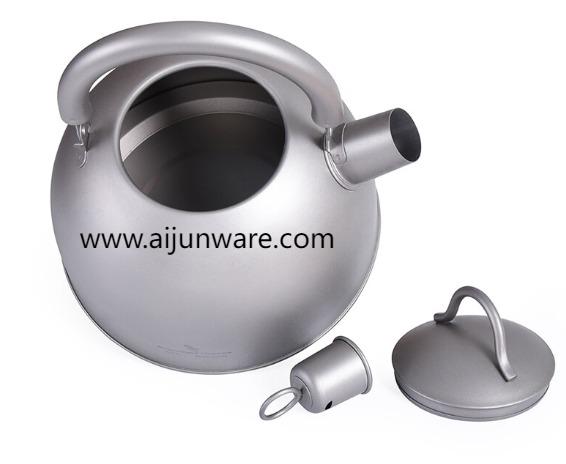Aijunware Camping Water Pot What Material Should You Pick

When you are packing for a multi day trek, a single item can change your whole rhythm: a Camping Water Pot that balances weight, capacity, and real world use. Backpackers measure ounces and liters like currency because every gram affects pace and comfort. Choosing the right pot is about matching mission to material and avoiding gear regret on the trail.
Why weight and volume matter
Every ounce you add increases the energy cost of moving uphill and the strain on shoulders after a long day. Volume matters because a pot that is too big wastes fuel and space; one that is too small forces extra trips to the water source or makes meal prep awkward. Fast boil times save fuel and time, while compact packing shapes improve load distribution. These are the trade offs that decide whether you enjoy the evening around the stove or curse it.
Lightweight materials compared: aluminum stainless steel titanium alloy
Aluminum is widely used because it heats quickly and is affordable. It can be thin and light but is easier to dent and less tolerant of direct fire. Stainless steel is tougher and easy to clean but heavier and slower to heat. Titanium sits between those two in cost profile: it is light and corrosion resistant but usually transfers heat less evenly. Modern alloy designs and pots with heat exchangers aim to combine conductivity and strength so you can save fuel without adding weight.
Capacity and typical scenarios: 0.5L 1L 2L
A 0.5L pot works for single cup boiling and quick rehydrates on short fast outings. A 1L pot fits two simple meals or one large dehydrated meal and a hot drink; it is often the sweet spot for solo or pair trips. A 2L pot is for group cooking, melting snow, or longer base camp stays where multi person meals matter. Match capacity to meals planned and whether you expect to melt snow or re-supply water frequently.
Balancing weight and durability
If your route includes rugged terrain or open fires, durability moves up the priority list. If you are counting every ounce for long alpine days, choose lighter metals and accept gentler handling. Consider cookware that uses thicker walls where needed or reinforced lips to resist warping. The middle ground is often a lightweight aluminum pot with thoughtful reinforcement or a thin stainless steel design for rougher use.
Thermal efficiency and stove compatibility
Heat conduction matters more than raw weight when it comes to boil times. Aluminum and pots with integrated heat exchange surfaces typically bring water to a boil faster on small canister stoves and in windy conditions. Titanium can be slower to transfer heat, so fuel use may increase if boil speed is the priority. If you plan to cook over a wood fire, prioritize materials with higher melting tolerance and thicker construction.
Practical recommendations by budget
Entry level: a simple stainless steel or aluminum pot will give reliable capacity and easy cleaning without a high price. Mid range: consider aluminum pots with heat exchanger features or layered bases for better heating and fuel savings. Higher tier: titanium options reduce carried weight and resist corrosion for long term use, though they usually cost more. Aijunware produces a selection that spans these choices so you can pick a pot that fits both mission and budget.
Quick field checklist for choosing your pot
Ask yourself: how many people will I serve what stove will I use will I need to melt snow will I be cooking over a fire. These simple questions point you toward size and material, and keep decisions practical rather than aspirational. A well chosen pot can reduce fuel, simplify chores, and make evenings relaxing instead of stressful.
Choosing a pot that is good enough for one trip
A good enough choice is one that meets your planned meals and fits how you travel. For light fast hikes, prioritize material and low weight. For longer or rougher trips, prioritize durability and slightly larger capacity. If you want a balance of features and a supplier with a range of cookware options, check products from aijunware where camping focused pot designs are presented with practical features and construction details. For a closer look see www.aijunware.com/product/ .
- AI
- Vitamins
- Health
- Admin/office jobs
- News
- Art
- Causes
- Crafts
- Dance
- Drinks
- Film
- Fitness
- Food
- Jogos
- Gardening
- Health
- Início
- Literature
- Music
- Networking
- Outro
- Party
- Religion
- Shopping
- Sports
- Theater
- Wellness


